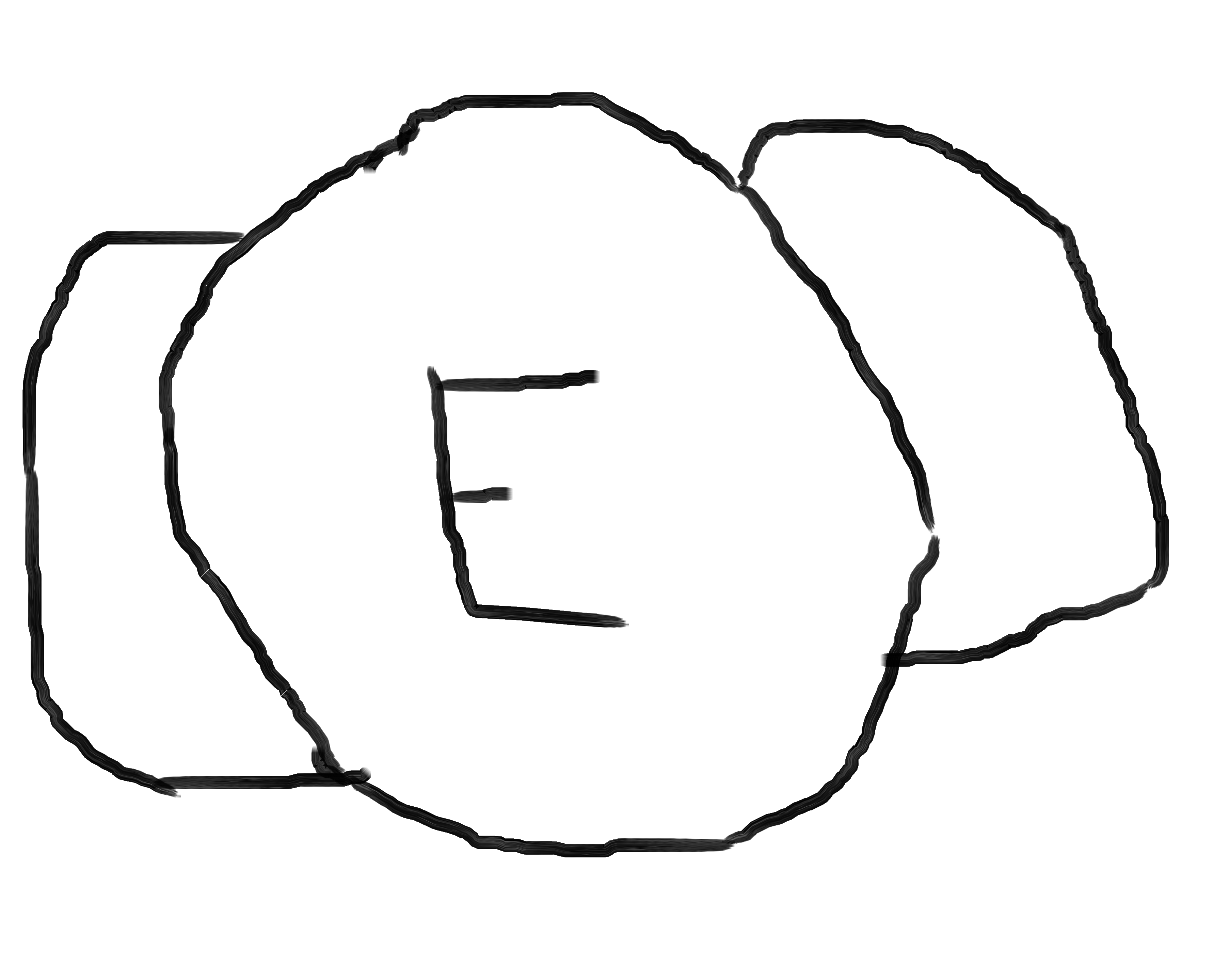This article says that NASA uses 15 digits after the decimal point, which I’m counting as 16 in total, since that’s how we count significant digits in scientific notation. If you round pi to 3, that’s one significant digit, and if you round it to 1, that’s zero digits.
I know that 22/7 is an extremely good approximation for pi, since it’s written with 3 digits, but is accurate to almost 4 digits. Another good one is √10, which is accurate to a little over 2 digits.
I’ve heard that ‘field engineers’ used to use these approximations to save time when doing math by hand. But what field, exactly? Can anyone give examples of fields that use fewer than 16 digits? In the spirit of something like xkcd: Purity, could you rank different sciences by how many digits of pi they require?
I use 100,000,000,000,000
Mechatronics student. If your not using 3.1416 as a minimum, then your doing it wrong.
you’re
doing it wrong
then
3.14159
Design of mechanical parts, specifically machined. 0.001" is a fairly tight tolerance for my applications, 0.0001" is going to cost a pretty penny and is used judiciously. We don’t really need to go to 3.14159 but I honestly think we do because it rhymes.
because it rhymes.
With?
This
That is 0.025 Millimeter in normal units
You can say 25 micrometers
Yes, it’s technically correct (which we all know is the best kind of correct) and engineers would understand.
Using mm means most everyone (who knows metric) understands that in much more practical terms. A quarter of a tenth of thiiis much is a pretty damn tight fit.
Micrometers is actually so common that it has a colloquial non-SI name of “micron”
According to wiki:
The micrometre is a common unit of measurement for wavelengths of infrared radiation as well as sizes of biological cells and bacteria,[1] and for grading wool by the diameter of the fibres.[3] The width of a single human hair ranges from approximately 20 to 200 μm.
Bold of you to assume that anywhere close to everyone who understands metric would know that 0.25 is a quarter of something.
Bold of you to assume that the country that still uses the Imperial system is the one that better understands fractions.
I didn’t say that imperial countries understand them better.
Usually 8 decimal places.
But I work in HASS so we don’t have much call for pi.
Answering my own question: I work in web development and my usual value for pi is the standard JavaScript Math.PI. JavaScript uses 64-bit floats, which are accurate to about 15 decimal places. But that’s how many digits the computer uses. For practical math, I don’t think I’ve ever needed more than 2 digits of accuracy in an equation involving pi.
if you round it to 1, that’s zero digits.
Isn’t rounding to zero digits a nonsensical concept? And “1” is one digit, not zero digits.
Isn’t rounding to zero digits a nonsensical concept?
Mostly, yeah. But sometimes you really just need to know the order of magnitude, which is a process kinda similar to rounding, but does lose a digit in the process, so you could kinda argue—if you squint a little—that it’s “rounding to zero digits”.
That’s basically my reasoning, yeah. Specifically, in floating point notation; if you get rid of all the mantissa bits, you’d be left with 1 * 2^0. I suppose it could be 0 * 2^0, but a leading 1 is implied, since virtually all numbers are nonzero.
Small correction: Pi lies between 2^1 and 2^2, so its floating-point exponent is 1. With all the mantissa bits cleared you’d be left with 1 * 2^1, not 1 * 2^0.
Ya know, this thread has inspired me. I’m a sound engineer, and find myself yelling “check one two three four” in the michrophone to test it all the time. I’m gonna start reciting the digits of Pi instead, and then as I learn them, I’ll progressively advance how many numbers of Pi that I use in my everyday job :D
I work at a library, though. I should probably just go with poetry or Douglas Adams or something, but this makes me sound much more impressive
You are already reciting some of the digits of pi. Just not the first ones.
Or some Douglas Adams poetry: Vogon poetry.
Oh freddled gruntbuggly,
Thy micturations are to me
As plurdled gabbleblotchits on a lurgid bee.
I rarely use pi. But when I do I only use 3 digits. I wish I could use less, but we still need to use change when we make purchases.
As a mathematician, I don’t use any digits, but the symbol π.
As a computer scientist, same, but it’s called
PI.It’s the computer that does the thing with the digits, not me. 🙃
I’d like to agree, but writing π with capital letters is heresy.
Yeah, math conventions and programming conventions don’t always align. As in, basically never…
In which case you’re probably using a predefined 64-bit floating point number, which I think is accurate to 15 digits.
Well, you know what’s funny, after writing the comment above, I double-checked what the π constant is called in Rust, as that’s what I’m mostly coding with these days.
And well, it actually makes you choose. There’s
f32::consts::PIandf64::consts::PI. Which I guess, makes sense. If you’re calculating with 32-bit floats, you should be aware that π is going to be less precise.
So, yeah, I’m a hoax, computer scientists do need to decide between 32-bit and 64-bit.In fact, the one time I needed π in Rust, was as a 32-bit float. I built a tiny gravity simulation in a game engine and game engines generally use 32-bit floats…
I’m a liar and I use all the digits of pi.
Well you’re honest about being a liar so there’s that I guess. I on the other hand only speaks the truth and I use all the digits of pi, honestly I do.
There are two guards: one speaks only the truth and the other only lies. But both know the infinite digits of pi and are underemployed as guards who never get to use that knowledge.
I work in trails, like what you might walk on, and in the rare case I need pi, I use 3.14. This week, we have a meeting to talk about some things on 14 March. I will be using cornbread because I do not know how to make a pie but I will eat the pie others make. I look forward to this meeting.
When I worked on a website with a map on it I used 15
50000kms is the kind of distances you get going around the earth so to get it down to a millimeter precision from 50k I think 8 or 10 digits required?
So I just put 15
As an aside, you don’t need to/shouldn’t pluralize km. It’s just 50,000 km. 👍
Engineering student. I typically use whatever number of digits the calculator gives me in calculator computations, but that’s unnecessary. IMO for a design, an engineer should use at least as many digits of pi as needed to not lose any significance due to truncating pi specifically. Practically, this means: keep as many significant digits as your best measurement. In my experience, measurements have usually been good for 3 significant digits.
For back-of-the-envelope or order-of-magnitude calculations where I only need to get in the ballpark of correctness, I’ll use 3 (i.e., one significant digit). For example, if I order a pizza with a diameter of 12 inches, A ≈ 36 * 3 in^2 = 108 in^2 is a fine ballpark approximation that I can do in my head to the real area A = 36π in^2 ≈ 113.097… in^2 that my calculator gives me.
I like your idea of using 3 as an approximation to get ballpark figures - if you wanted to add a smidge of extra accuracy to that you can just remember that in doing so, you’re taking away roughly 5% of pi.
0.14159265 / 3 ≈ 0.04719755
Add in around 5% at the end and your approximation’s accuracy tends to gain an order of magnitude. For your pizza example:
108 in^2 x 1.05 = 113.4 in^2 which is accurate to three significant figures and fairly easy to calculate in your head if you can divide by twenty.
You could even fudge it a little and go “108 is pretty close to 100. 5% of 100 is obviously 5, so the answer is probably around 108+5=113”
I’m a consultant and I use whatever Android calculator gives me

This probably won’t play well with this audience, but I’m a management/strategy consultant. “~5” (technically one decimal place but also rounded to the nearest interval of 5) for any C-level decks ;)
That’s less than one significant digit! Even just to one significant bit, pi is 4.
That’s a crime 😭
Oof :D


















